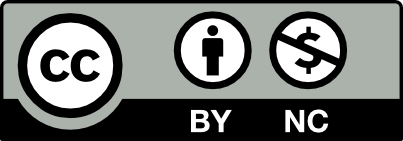Impact of Ecological Thermal Roof Insulation on the Energy Efficiency of Conventional Buildings in a Semi-Arid Climate
DOI:
https://doi.org/10.51646/jsesd.v14iSI_MSMS2E.401Keywords:
Thermal simulation, Thermal insulation, Energy efficiency, Ecological panels, Sustainable building.Abstract
The roof is the most exposed element of a building's envelope and significantly contributes to cooling loads in hot climates. Effective thermal insulation of the roof can substantially reduce energy consumption for cooling and help achieve sustainability goals. This theoretical study focuses on the thermal and energy performance of an eco-friendly insulation material, aiming to determine the optimal thickness for the roof of a traditional residential building in the semi-arid climate. The study evaluated the effectiveness of an insulation material composed of 60% cardboard and 40% straw, with varying thicknesses. TRNSYS software was used to simulate the thermal behavior of the building. The study's results reveal that the optimal thickness is 4 cm, providing the best thermal performance by reducing maximum indoor temperatures by 2.67°C during the hottest months, leading to a 37.93% reduction in annual cooling energy demand. Furthermore, the 4 cm panels represent the best compromise between thermal performance, resource efficiency, and economic feasibility. In conclusion, this study provides valuable insights for the design of more energy-efficient buildings through optimized thermal insulation. Future research should explore additional factors influencing building performance, such as the long-term durability of materials in different climates, as well as the impact of building occupancy and orientation. Although this study has certain limitations in its analysis of specific parameters and alternatives, it makes a significant contribution to understanding the performance of buildings with ecological insulation.
Downloads
Metrics
References
A. Bachir and N. Taieb, “Numerical analysis for energy performance optimization of hollow bricks for roofing. Case study: Hot climate of Algeria,” Constr Build Mater, vol. 367, p. 130336, Feb. 2023, doi: 10.1016/J.CONBUILDMAT.2023.130336.
A. Alioui, S. Idrissi Kaitouni, Y. Azalam, N. Al armouzi, E. M. Bendada, and M. Mabrouki, “Effect of straw fibers addition on hygrothermal and mechanical properties of carbon-free adobe bricks: From material to building scale in a semi-arid climate,” Build Environ, vol. 255, p. 111380, May 2024, doi: 10.1016/J.BUILDENV.2024.111380. DOI: https://doi.org/10.1016/j.buildenv.2024.111380
I. Bouchefra, F. Z. EL Bichri, H. Chehouani, and B. Benhamou, “Mechanical and thermophysical properties of compressed earth brick rienforced by raw and treated doum fibers,” Constr Build Mater, vol. 318, p. 126031, Feb. 2022, doi: 10.1016/J.CONBUILDMAT.2021.126031. DOI: https://doi.org/10.1016/j.conbuildmat.2021.126031
Y. Azalam, A. Alioui, N. Al Armouzi, M. Benfars, M. Mabrouki, and E. M. Bendada, “Physical and mechanical properties of adobe bricks reinforced by natural additives, a case study of alfalfa fibers,” EUREKA: Physics and Engineering, vol. 2024-July, no. 4, pp. 144–159, Jul. 2024, doi: 10.21303/2461-4262.2024.003426. DOI: https://doi.org/10.21303/2461-4262.2024.003426
C. Jia, X. Geng, F. Liu, and Y. Gao, “Thermal behavior improvement of hollow sintered bricks integrated with both thermal insulation material (TIM) and Phase-Change Material (PCM),” Case Studies in Thermal Engineering, vol. 25, p. 100938, Jun. 2021, doi: 10.1016/J.CSITE.2021.100938. DOI: https://doi.org/10.1016/j.csite.2021.100938
Y. Chihab, L. Essaleh, R. Bouferra, and A. Bouchehma, “Numerical study for energy performance optimization of hollow concrete blocks for roofing in a hot climate of Morocco,” Energy Conversion and Management: X, vol. 12, p. 100113, Dec. 2021, doi: 10.1016/J.ECMX.2021.100113.
Y. Chihab, L. Essaleh, R. Bouferra, and A. Bouchehma, “Numerical study for energy performance optimization of hollow concrete blocks for roofing in a hot climate of Morocco,” Energy Conversion and Management: X, vol. 12, p. 100113, Dec. 2021, doi: 10.1016/J.ECMX.2021.100113.
P. Principi and R. Fioretti, “Thermal analysis of the application of pcm and low emissivity coating in hollow bricks,” Energy Build, vol. 51, pp. 131–142, Aug. 2012, doi: 10.1016/J.ENBUILD.2012.04.022. DOI: https://doi.org/10.1016/j.enbuild.2012.04.022
A. Bachir and N. Taieb, “Numerical analysis for energy performance optimization of hollow bricks for roofing. Case study: Hot climate of Algeria,” Constr Build Mater, vol. 367, p. 130336, Feb. 2023, doi: 10.1016/J.CONBUILDMAT.2023.130336. DOI: https://doi.org/10.1016/j.conbuildmat.2023.130336
J. Xamán, J. Cisneros-Carreño, I. Hernández-Pérez, I. Hernández-López, K. M. Aguilar-Castro, and E. V. Macias-Melo, “Thermal performance of a hollow block with/without insulating and reflective materials for roofing in Mexico,” Appl Therm Eng, vol. 123, pp. 243–255, Aug. 2017, doi: 10.1016/J.APPLTHERMALENG.2017.04.163. DOI: https://doi.org/10.1016/j.applthermaleng.2017.04.163
K. Nandapala and R. Halwatura, “Operational feasibility of a hybrid roof insulation system with bamboo and vegetation: An experimental study in tropical climatic conditions,” Case Studies in Construction Materials, vol. 15, p. e00616, Dec. 2021, doi: 10.1016/J.CSCM.2021.E00616. DOI: https://doi.org/10.1016/j.cscm.2021.e00616
N. Zhou, W. Gao, M. Nishida, H. Kitayama, and T. Ojima, “Field study on the thermal environment of passive cooling system in RC building,” Energy Build, vol. 36, no. 12, pp. 1265–1272, Dec. 2004, doi: 10.1016/J.ENBUILD.2003.09.012. DOI: https://doi.org/10.1016/j.enbuild.2003.09.012
M. Charai, H. Sghiouri, A. Mezrhab, and M. Karkri, “Thermal insulation potential of non-industrial hemp (Moroccan cannabis sativa L.) fibers for green plaster-based building materials,” J Clean Prod, vol. 292, p. 126064, Apr. 2021, doi: 10.1016/J.JCLEPRO.2021.126064. DOI: https://doi.org/10.1016/j.jclepro.2021.126064
“View of Impact of Insulation using Bio-sourced Materials on the Thermal and Energy Performance of a Typical Residential Building in Morocco.” Accessed: Aug. 29, 2024. [Online]. Available: https://semarakilmu.com.my/journals/index.php/fluid_mechanics_thermal_sciences/article/view/6862/4800
Y. Chihab, L. Essaleh, R. Bouferra, and A. Bouchehma, “Numerical study for energy performance optimization of hollow concrete blocks for roofing in a hot climate of Morocco,” Energy Conversion and Management: X, vol. 12, p. 100113, Dec. 2021, doi: 10.1016/J.ECMX.2021.100113. DOI: https://doi.org/10.1016/j.ecmx.2021.100113
Y. Zhang et al., “Study on the influence of thermo-physical parameters of phase change material panel on the indoor thermal environment of passive solar buildings in Tibet,” J Energy Storage, vol. 52, p. 105019, Aug. 2022, doi: 10.1016/J.EST.2022.105019. DOI: https://doi.org/10.1016/j.est.2022.105019
P. K. S. Rathore, N. K. Gupta, D. Yadav, S. K. Shukla, and S. Kaul, “Thermal performance of the building envelope integrated with phase change material for thermal energy storage: an updated review.,” Sustain Cities Soc, vol. 79, p. 103690, Apr. 2022, doi: 10.1016/J.SCS.2022.103690. DOI: https://doi.org/10.1016/j.scs.2022.103690
M. Ouakarrouch, S. Bousshine, A. Bybi, N. Laaroussi, and M. Garoum, “Acoustic and thermal performances assessment of sustainable insulation panels made from cardboard waste and natural fibers,” Applied Acoustics, vol. 199, p. 109007, Oct. 2022, doi: 10.1016/J.APACOUST.2022.109007. DOI: https://doi.org/10.1016/j.apacoust.2022.109007
M. S. Chandra, K. Nandapala, G. Priyadarshana, and R. U. Halwatura, “Developing a durable thermally insulated roof slab system using bamboo insulation panels,” International Journal of Energy and Environmental Engineering, vol. 10, no. 4, pp. 511–522, Dec. 2019, doi: 10.1007/S40095-019-0308-X/FIGURES/17. DOI: https://doi.org/10.1007/s40095-019-0308-x
Hicham Kaddouri, Abderrahim Abidouche, Mohamed Saidi Hassani Alaoui, Ismael Driouch, and Said Hamdaoui, “Impact of Insulation using Bio-sourced Materials on the Thermal and Energy Performance of a Typical Residential Building in Morocco,” Journal of Advanced Research in Fluid Mechanics and Thermal Sciences, vol. 117, no. 1, pp. 43–59, May 2024, doi: 10.37934/arfmts.117.1.4359. DOI: https://doi.org/10.37934/arfmts.117.1.4359
Downloads
Published
How to Cite
Issue
Section
License
Copyright (c) 2024 Solar Energy and Sustainable Development Journal

This work is licensed under a Creative Commons Attribution-NonCommercial 4.0 International License.














